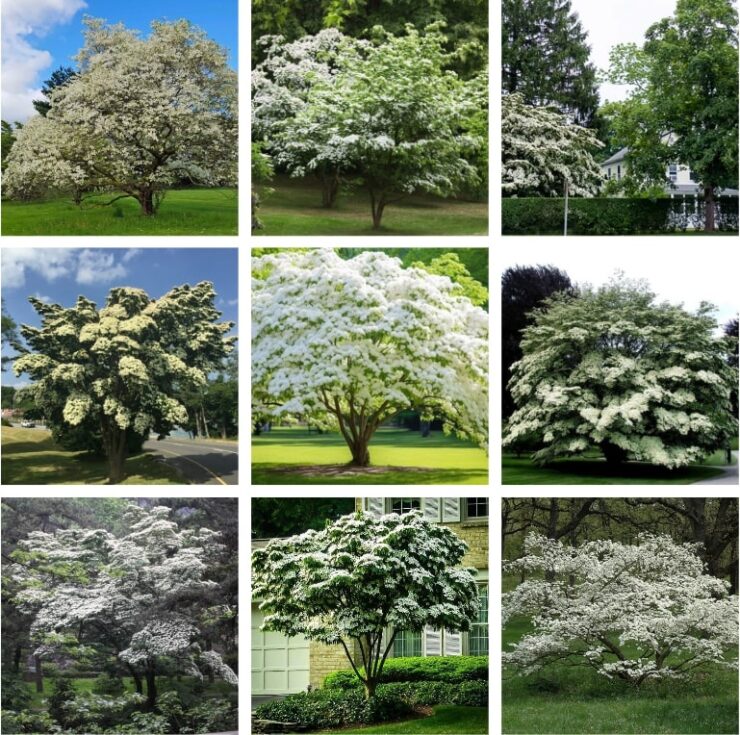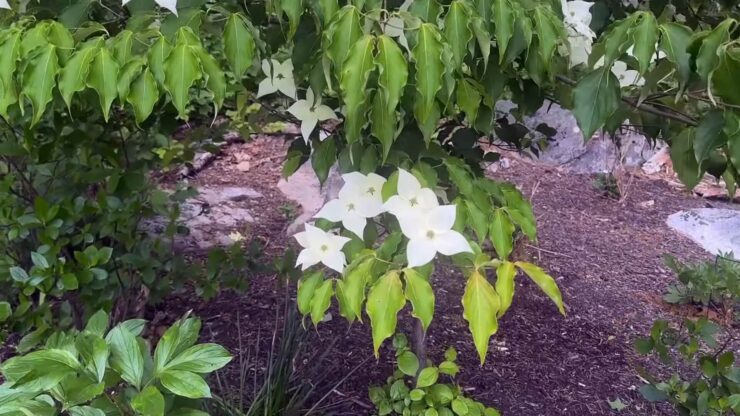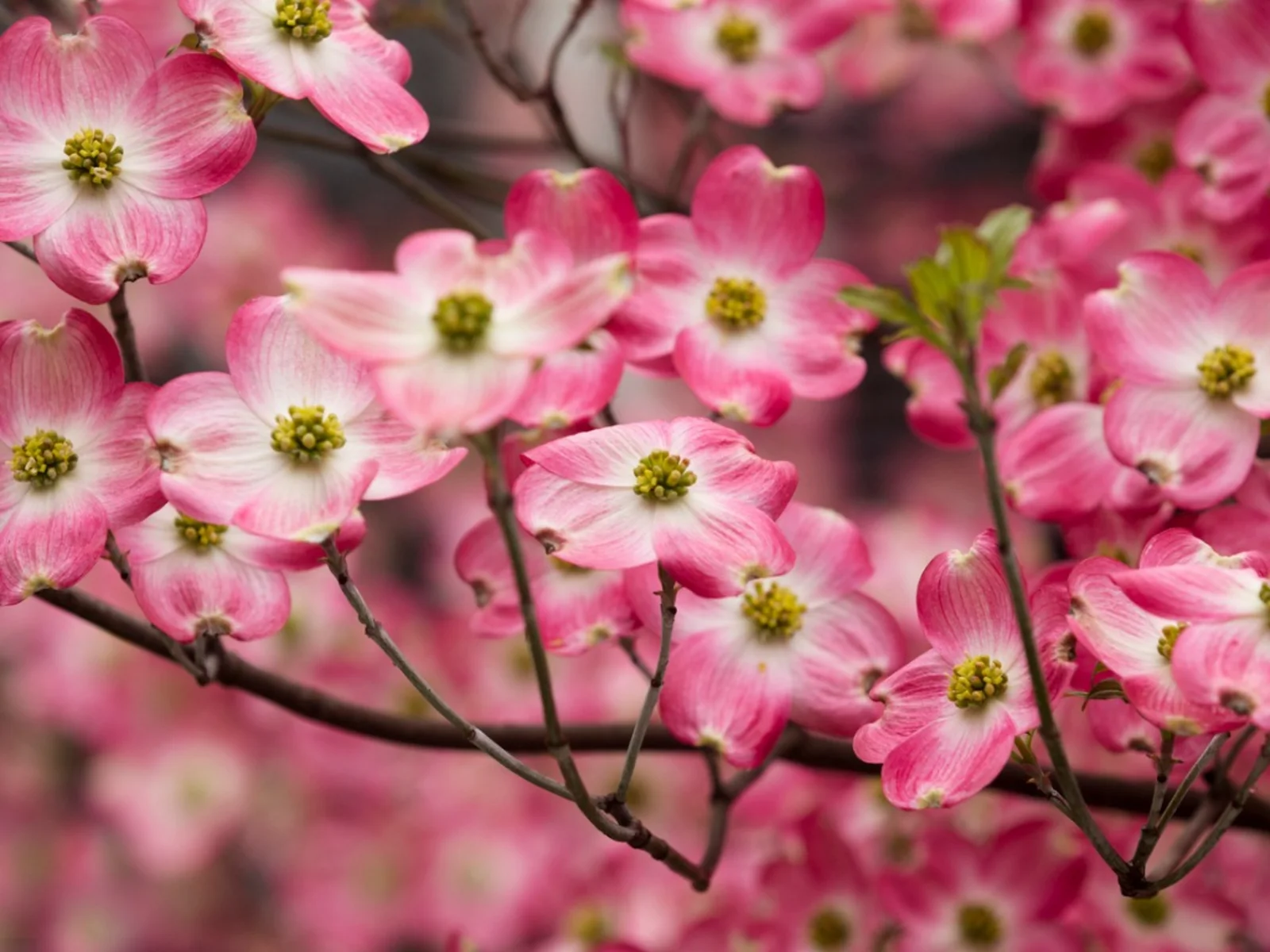Pictured above is a flowering dogwood (left) and a roughleaf dogwood (right). There are a number of species of dogwoods all but one have opposite leaf arrangements. The Alternate-Leaf Dogwood is the one exception. Dogwoods are usually shrubs to small trees and can easily be recognized by the veins in their leaves. If you see a small tree whose veins curve away from the midrib and then curve back forming something like this ((())) then it is a dogwood.
Fruit is a food source for songbirds and deer will occasionally browse on the leaves when the leaves are young. Not something you would plant FOR deer.
Ornamental Value

Dogwood trees are renowned for their stunning flowers. In spring, they produce an array of white, pink, or red blooms, depending on the species. These flowers create a striking visual impact, enhancing the aesthetic appeal of gardens and parks. In addition to their spring blossoms, many dogwoods display vibrant red or purple foliage in the fall, offering year-round beauty.
The bark of dogwood trees adds another layer of visual interest. It often features a unique pattern that can be especially striking in winter when the tree is bare. Varieties like the Kousa Dogwood have mottled bark, which adds texture and color to winter landscapes. This characteristic makes dogwoods an excellent choice for ornamental use, providing beauty in every season.
Ecological Contributions

Dogwood trees play a significant role in supporting local wildlife. Their flowers attract a variety of pollinators, including bees and butterflies. These pollinators are essential for the health of ecosystems, as they help in the reproduction of many plant species. The fruit of dogwood trees, which ripens in late summer and fall, provides a food source for birds and small mammals. This fruit supports wildlife through the colder months when other food sources are scarce.
The roots of dogwood trees help prevent soil erosion, like the Water Locust tree we wrote about in the previous blog. By stabilizing the soil, they protect riverbanks and slopes from washing away. This contributes to the overall health of the ecosystem, maintaining the integrity of the landscape. Dogwoods also improve soil quality by adding organic matter as their leaves decompose, enriching the soil with nutrients.
Medicinal and Practical Uses
Dogwood trees have a history of use in traditional medicine. Various parts of the tree, including the bark and leaves, have been used to treat ailments such as fevers, pain, and digestive issues. The bark contains compounds that have been used for their anti-inflammatory and astringent properties. This traditional knowledge highlights the potential health benefits of dogwood trees.
In addition to their medicinal uses, dogwoods have practical applications. The wood is hard and dense, making it useful for crafting tools and other items. Historically, it was used to make weaving shuttles, tool handles, and even golf club heads. The durability of dogwood wood ensures that these items last, providing a practical resource for various needs.
Last Words
Dogwood trees, with their ornamental beauty, ecological benefits, and practical uses, are a valuable addition to any landscape. They support local wildlife, prevent soil erosion, and offer medicinal and practical applications. This makes them not only a delight to behold but also a crucial part of the environment and human culture.

